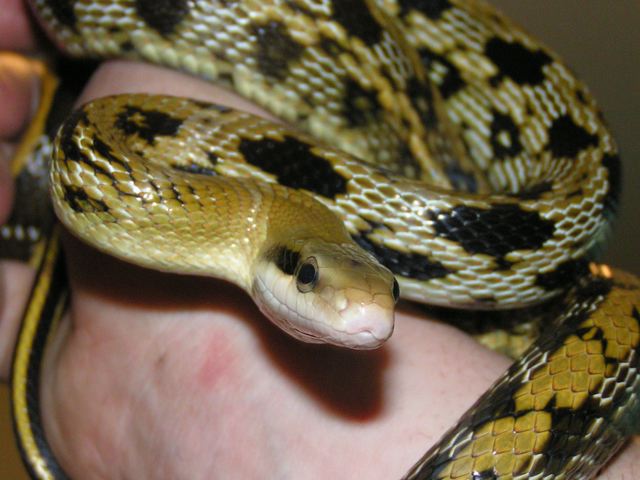Introduction
 I’ve never quite understood why the aptly named Taiwan beauty snake did not soar in popularity as soon as it entered the pet trade. I was captivated by them from the moment I began looking after a group at the Bronx Zoo some 15 years ago, and added the species to the Staten Island Zoo’s collection when working on the reptile house renovation there. Today, these arboreal constrictors are beginning to receive some attention from hobbyists, and captive born young are frequently available.
I’ve never quite understood why the aptly named Taiwan beauty snake did not soar in popularity as soon as it entered the pet trade. I was captivated by them from the moment I began looking after a group at the Bronx Zoo some 15 years ago, and added the species to the Staten Island Zoo’s collection when working on the reptile house renovation there. Today, these arboreal constrictors are beginning to receive some attention from hobbyists, and captive born young are frequently available.
NATURAL HISTORY
Classification
Taiwan beauty snakes are placed within the family Colubridae, and until recently were classified in the genus Elaphe, along with the corn, black rat and similar North American snakes that they superficially resemble. Eight to nine subspecies have been identified, but interbreeding where their ranges overlap complicates taxonomy. The group is often loosely referred to as the Asian ratsnakes.
Physical Description
The background color of these gorgeous snakes is yellowish tan/brown to olive, and a pair of joined black spots and smaller blotches mark the back. Along the last third of the body the color pattern abruptly changes – from here the snake is boldly marked with a band of yellow and 2 black stripes. Smaller blotches cross these, and a black stripe extends from the eye to the mouth’s corner. The ventral surface is creamy-white speckled with black.
The tail is highly prehensile, allowing for long strikes at fast-moving, arboreal prey.
This largest member of its genus averages 5-6 feet long, but occasionally approaches 9 feet in length.
Range
This subspecies is native to the island of Taiwan, but is possibly introduced to mainland China. Related subspecies range throughout much of India, China, Southeast Asia and Japan’s Ryukyu Islands.
This snake and its relatives, most of which are quite colorful, are sometimes kept in rural homes and barns for their rodent-catching abilities. This has resulted in range expansions for a number of beauty snake subspecies. As individuals are highly variable in appearance, and the subspecies readily interbreed, the taxonomy of the genus is unclear.
Habitat
Taiwan beauty snakes are quite adaptable, being found in forests, open woodlands, overgrown fields, swamps and suburban areas. If unmolested they will take up residence in barns, rural homes and agricultural fields. All beauty snakes are highly arboreal but will descend to the ground to hunt.
Status in the Wild
The wild status is largely unstudied, but it is known that the Taiwan beauty snake is hunted for the food, skin, pet and medicinal trade. However, it adapts well and may even benefit from some human presence, frequenting farms, trash dumps and abandoned buildings in search of rodents. Some range expansion has likely occurred via people who transport this snake (and related subspecies) from place to place as a rodent control measure.
Diet
Squirrels, rats, mice, bats and other small mammals, birds and their eggs; hatchlings feed largely upon treefrogs and lizards. Prey is overcome by constriction.
Reproduction
The 6-10 eggs are laid in May-June, but other than that reproduction in the wild is not well documented. Please see below for captive breeding information.
Miscellaneous
The Taiwan beauty snake’s threat display is very impressive – it compresses and inflates the first third of its body and rears up in an “S” shaped coil while facing the enemy and striking repeatedly.
Please check back Monday for information on the captive husbandry requirements of Beauty Snakes.
Image referenced from Wikipedia. First published by MSP. http://en.wikipedia.org/wiki/Image:Beautysnake.jpg
 That Reptile Blog – Reptile, Amphibian and Exotic Pet Care and Information
That Reptile Blog – Reptile, Amphibian and Exotic Pet Care and Information



2 comments
Pingback: The Natural History and Captive Husbandry of the Taiwan Beauty Snake or Chinese Ratsnake, Orthriophis (formerly “Elaphe”) taeniurus friesei | Pet Reptile Supplies
Pingback: FAO Viperlover - Page 3 - CaptiveBred Reptile Forums, Reptile Classified, Forum